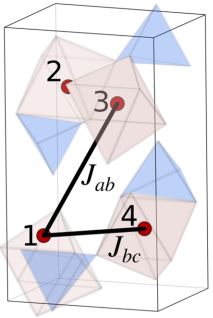Ellen Fogh, Bastian Klemke, Manfred Reehuis, Philippe Bourges, Christof Niedermayer, Sonja Holm-Dahlin, Oksana Zaharko, Jürg Schefer, Andreas B. Kristensen, Michael K. Sørensen, Sebastian Paeckel, Kasper S. Pedersen, Rasmus E. Hansen, Alexandre Pages, Kimmie K. Moerner, Giulia Meucci, Jian-Rui Soh, Alessandro Bombardi, David Vaknin, Henrik. M. Rønnow, Olav F. Syljuåsen, Niels B. Christensen and Rasmus Toft-Petersen
Control of magnetization and electric polarization is attractive in relation to tailoring materials for data storage and devices such as sensors or antennae. In magnetoelectric materials, these degrees of freedom are closely coupled, allowing polarization to be controlled by a magnetic field, and magnetization by an electric field, but the magnitude of the effect remains a challenge in the case of single-phase magnetoelectrics for applications. We demonstrate that the magnetoelectric properties of the mixed-anisotropy antiferromagnet LiNi1−xFexPO4 are profoundly affected by partial substitution of Ni2+ ions with Fe2+ on the transition metal site. This introduces random site-dependent single-ion anisotropy energies and causes a lowering of the magnetic symmetry of the system. In turn, magnetoelectric couplings that are symmetry-forbidden in the parent compounds, LiNiPO4 and LiFePO4, are unlocked and the dominant coupling is enhanced by almost two orders of magnitude. Our results demonstrate the potential of mixed-anisotropy magnets for tuning magnetoelectric properties.
https://doi.org/10.1038/s41467-023-39128-7




